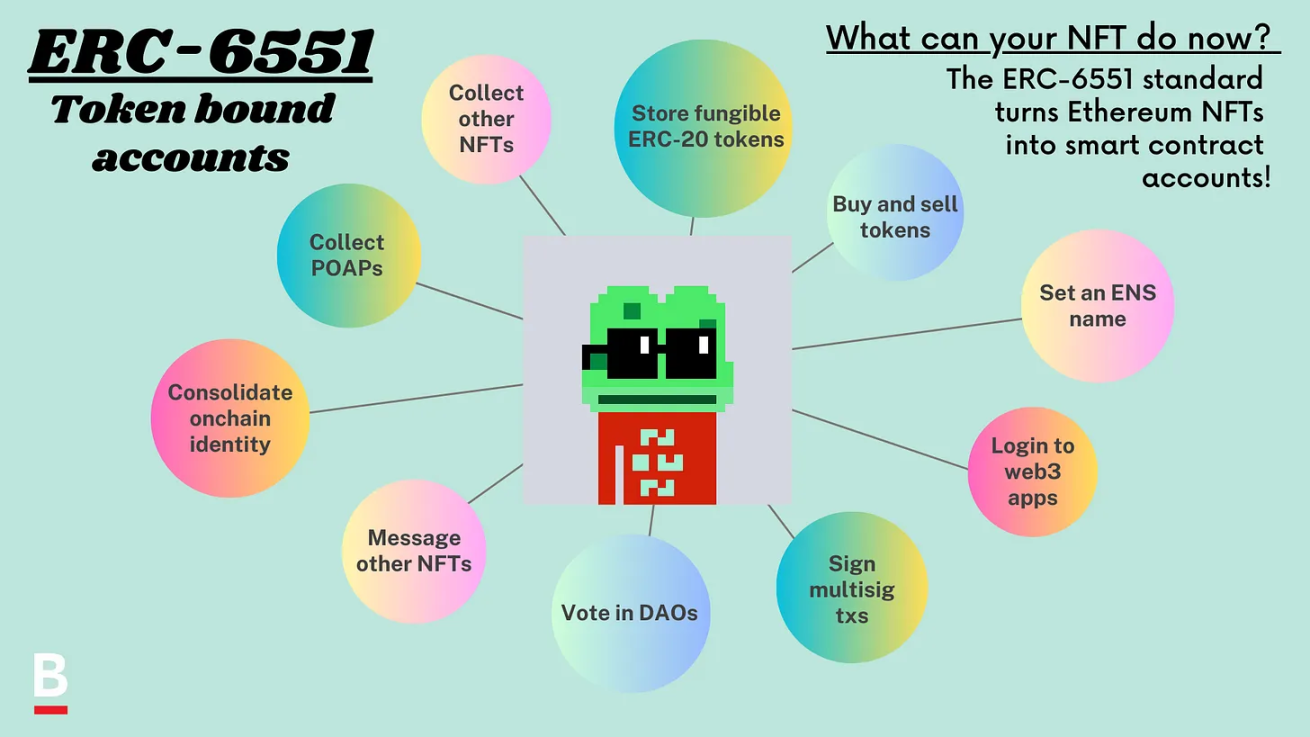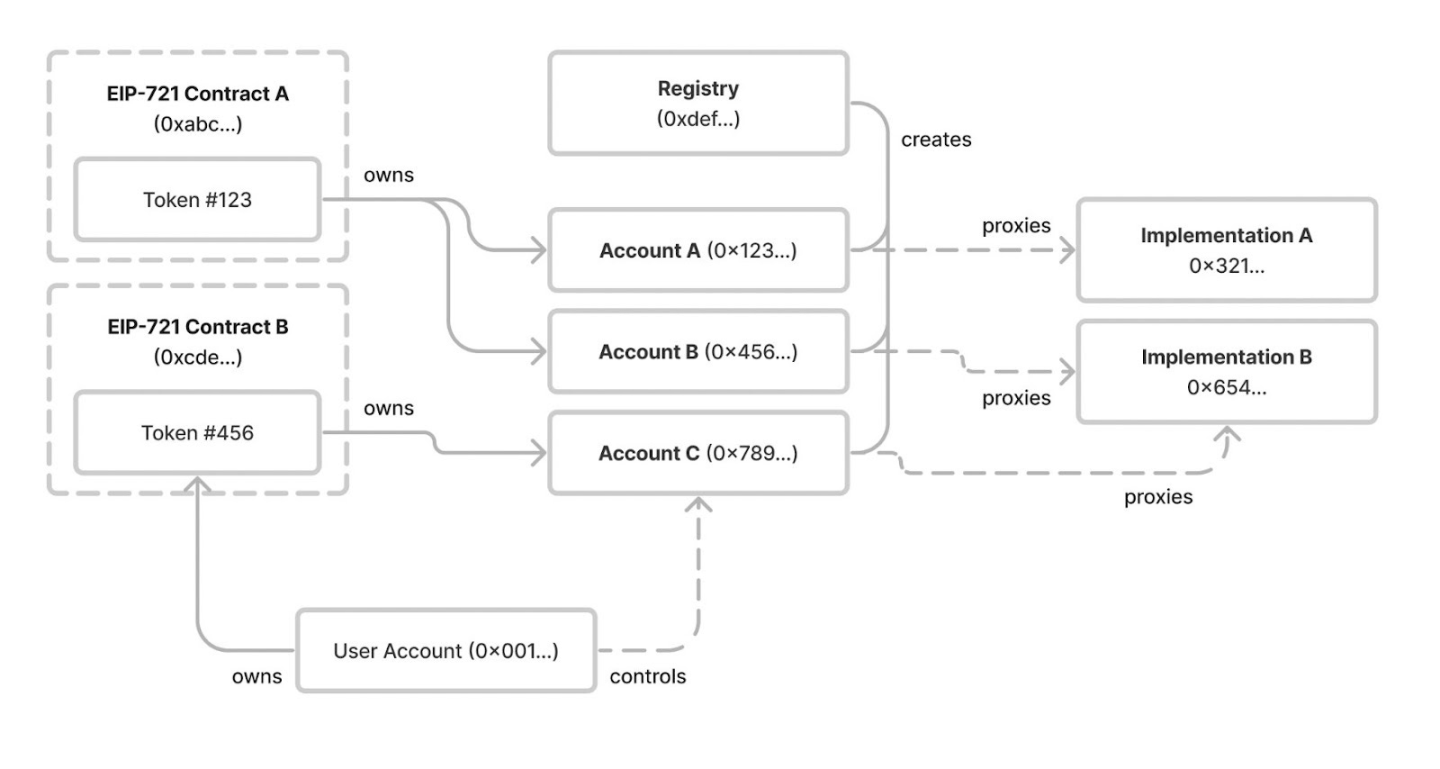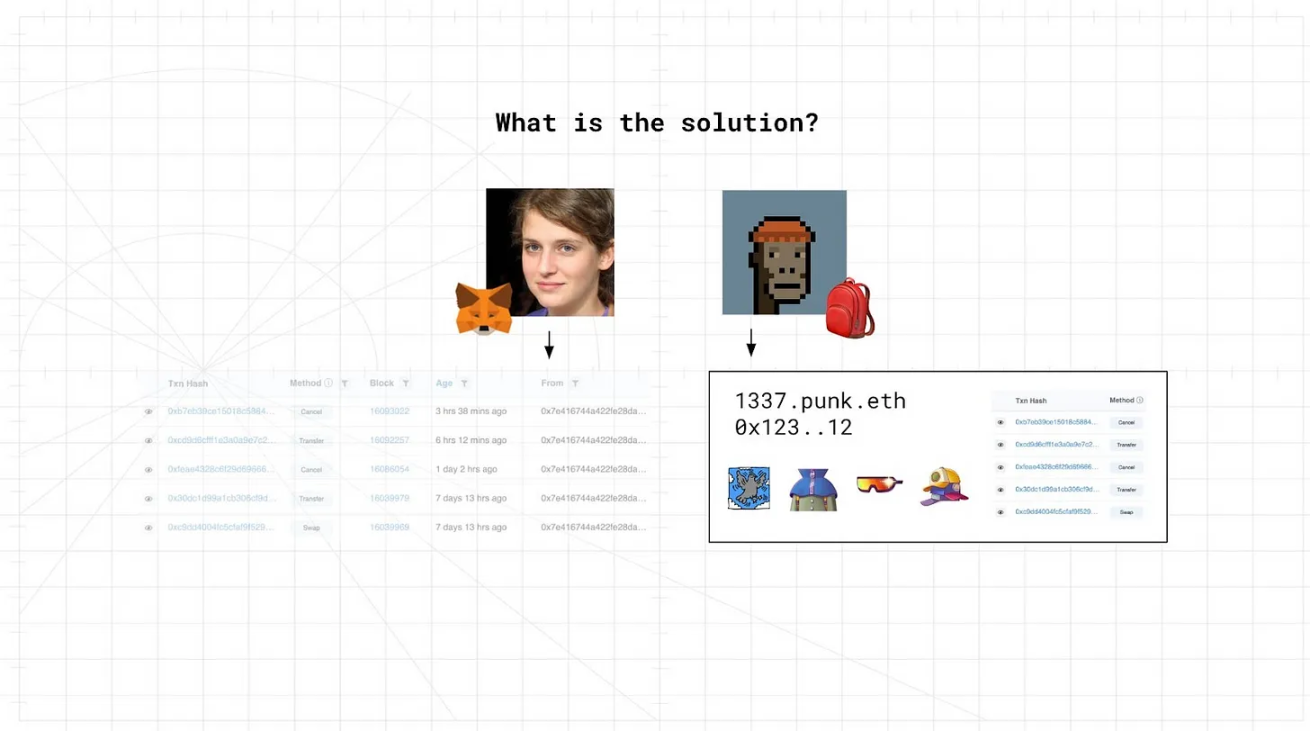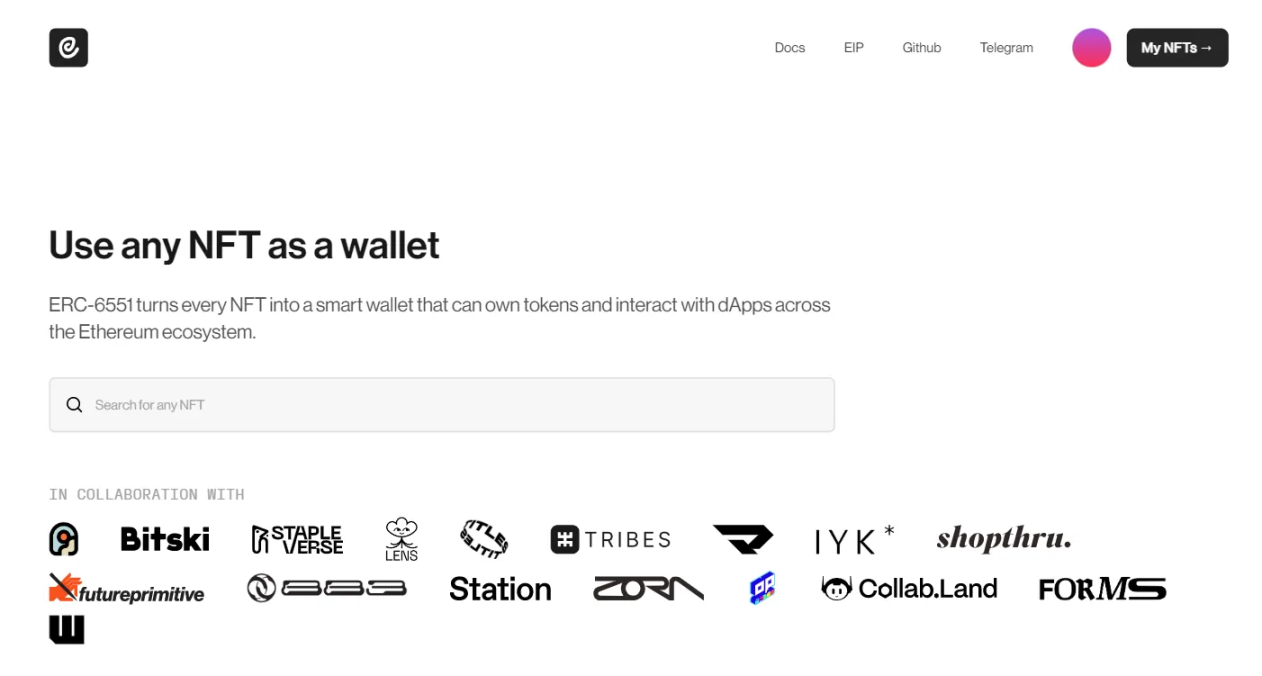How does ERC-6551 change the game by turning NFTs into Ethereum accounts?
How does ERC-6551 transform NFTs into Ethereum accounts?Author: William M. Peaster
Translation: GWEI Research
ERC-721 is the token standard that popularized NFTs on Ethereum as unique, verifiable digital assets.
But what if we could turn simple NFTs into mature Ethereum accounts?
- Embark on the Opside Value Exploration Journey: Pre-Alpha Incentive Test Network Countdown officially launched
- Exploring the New Trends of the Three Pillars of DeFi: DEX, Lending, and Stablecoins
- Why is everyone choosing to create platforms instead of making games?
Well, now we can! That’s because the new token standard ERC-6551 has just been introduced, pushing Ethereum NFTs into new realms of usability and functionality.
Your favorite collectibles can now directly own assets, interact with web3 applications, and better serve as your on-chain identity. We’re entering an exciting era, so let’s take you on a quick tour of ERC-6551 in today’s post!
ERC-6551 Beginner’s Guide📥
The Basics of ERC-6551
- Relevance
ERC-6551 is a new token standard released on the Ethereum mainnet on May 7th, 2023. It significantly enhances the functionality of ERC-721 NFTs, allowing them to operate as their own smart contract accounts, making them more versatile and practical than ever before.
- Why?
The motivation for ERC-6551 comes from the increasing use of NFTs as a form of on-chain identity. So far, ERC-721 tokens haven’t been able to act as proxies or hold other on-chain assets, unlike the use cases of real-world non-fungible assets.
Therefore, ERC-6551 solves this problem by granting each ERC-721 token full Ethereum account functionality while maintaining compatibility with existing ERC-721 contracts. This is achieved by deploying a unique smart contract account (called a “token binding account”) for each ERC-721 token through permissionless registration.
Note that a single NFT can also have multiple token binding accounts through ERC-6551. In this sense, an NFT can now contain multiple wallets and so on.
- How?
The system introduced in ERC-6551 is primarily composed of 1) a permissionless registry for deploying token binding accounts, and 2) standard interfaces for interacting with these accounts.
via EIP-6551
- What Can It Do?
Thanks to the ERC-6551 standard, you can now do anything with ERC-721 NFTs that you can do with a regular Ethereum wallet. Of course, the basics are storing other NFTs in your NFT, transacting with ERC20s, and so on. But that’s just scratching the surface!
For example, let’s say you’ve been accumulating NFT wearables in a new web3 game. You can now store them in the NFT of your choice rather than keeping them in your regular Ethereum wallet, like player avatars from the same game. This is not only more fun and familiar on a psychological level, but if you’re ready to move on from the game, you can consider selling player avatars + accumulated wearables as a cohesive unit on the NFT market via ERC-6551.
via Benny Giang
That’s just one hypothetical example, but there are definitely many possibilities here. Another example is that PFP projects can now incentivize and value the extended utility of their collections by airdropping rewards to any holder who binds a token to their account within their collection.
Additionally, the fact that ERC-6551 allows NFTs to have multiple token-bound accounts and supports multi-chain token-bound accounts provides an additional layer of utility that is sure to spark a new wave of experimentation and innovation throughout the NFT space.
Notes
Not all NFT projects are supported. That is, projects that do not depend on the ownerOf method in the smart contract are incompatible with the ERC-6551 standard, such as CryptoPunks.
In addition to the lack of comprehensive ERC-721 support, ERC-6551 presents two main security concerns that need to be kept in mind for the NFT ecosystem:
1.🚨 Avoid fraudulent behavior: Decentralized markets need to be wary of potential fraud. For example, a user sells an NFT that allegedly holds a certain amount of ETH, but after the sale, they withdraw the ETH, leaving the buyer’s account empty. Some suggested methods for preventing such scams include tracking token-bound account randomness and ensuring asset commitments remain unchanged during transactions. However, fraud prevention is not directly addressed in ERC-6551 and needs to be implemented at the market level or via external smart contracts.
2.🔄 Prevent ownership loops: ERC-6551 may cause NFTs to be transferred to their own token-bound accounts, rendering all assets in that account permanently inaccessible. This creates an “ownership loop” that is difficult to prevent from being deployed on-chain due to the infinite search space required. While enforcing prevention of these loops falls outside the scope of ERC-6551, it is recommended that applications take interface measures to limit such transfers.
People’s Views
ERC-6551 co-author and Future Primitive co-founder Benny Giang: “The idea is simple…what if NFTs had their own wallets? Inspired by Soulbound Tokens (SBT), our idea is the reverse, we call it Token-bound Accounts (TBA) instead of binding NFTs to a wallet, we bind the wallet to the NFT.”
Gami, Nouns DAO member and founder of Gnars DAO and Tings DAO: “ERC6551 (Token-bound Accounts) has been my vision for Nouns since joining. Hoping to see us support it in some way…making the ‘entrepreneur’ concept fully possible. Nouns could sell along with what they’ve acquired and built along their journey.”
0xBeans.eth, Solidity Engineer: “ERC-6551 might be one of the more interesting application-level Ethereum Improvement Proposals…lots of interesting properties like tradable accounts…while ENS was a step towards on-chain identities, I think the next step is NFTs having full Ethereum accounts. This EIP is closely related to EIP4337 (Account Abstraction). The reference implementation is essentially creating ETH accounts and binding them to a token.”
How to use ERC-6551
Tokenbound is an open-source tool kit centered around the ERC-6551 standard that provides one of its services as an account browser interface that you can use to deploy ERC-6551 accounts and interact with others.
If you’re interested in deploying token-bound accounts to your chosen NFT, you can follow these steps:
- Go to https://tokenbound.org and connect your chosen wallet
- Click the “My NFTs” button
- Select the NFT you want and click the “Deploy Account” button
- Confirm the deployment transaction with your wallet and wait for the transaction to complete
- That’s it! You will now see the “Use Wallet” option in the dashboard of the selected NFT; at the time of writing, I received a “coming soon…” message, so hopefully full functionality will be released soon
In fact, please note that ERC-6551 has just arrived on the mainnet, so tools around it are just beginning to be developed. Expect to see progress in various “user experience” and “user interface” here. In the meantime, I suggest taking some time to check out the FAQ at the bottom of tokenbound.org before diving in.
The arrival of ERC-6551 is a historic milestone in the NFT field, opening up a world of new possibilities by turning NFTs into their own smart contract accounts. This brings more versatility to NFTs, but also makes them more closely tied to real-world use cases, making them more practical and relevant to users. Zooming in, let’s observe the increase in adoption and experimentation of ERC-6551 in the coming months!
In addition, at any time now, skeptics who say NFTs can “right-click save” are now completely unfounded, as we have token-bound accounts in NFTs, which makes this accusation even more baseless. You can copy and save the image, of course, but you cannot copy and save what is inside😉
We will continue to update Blocking; if you have any questions or suggestions, please contact us!
Was this article helpful?
93 out of 132 found this helpful
Related articles
- The World Cup is targeted by Web3 on a global stage
- The Fed’s worst nightmare: other factors that are getting closer to a turnaround
- Foresight Ventures: Review of meme coin investment rules
- The ATOM 2.0 white paper is about to be released, can the value capture capability of Cosmos be improved?
- How Blockchain Is Impacting Online Poker
- Canada Overtakes U.S. in Percentage of Cryptocurrency Investors
- Viewpoint | How will bitcoin prices react when US companies reopen?










